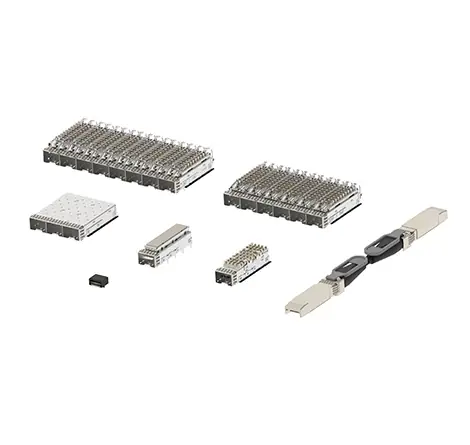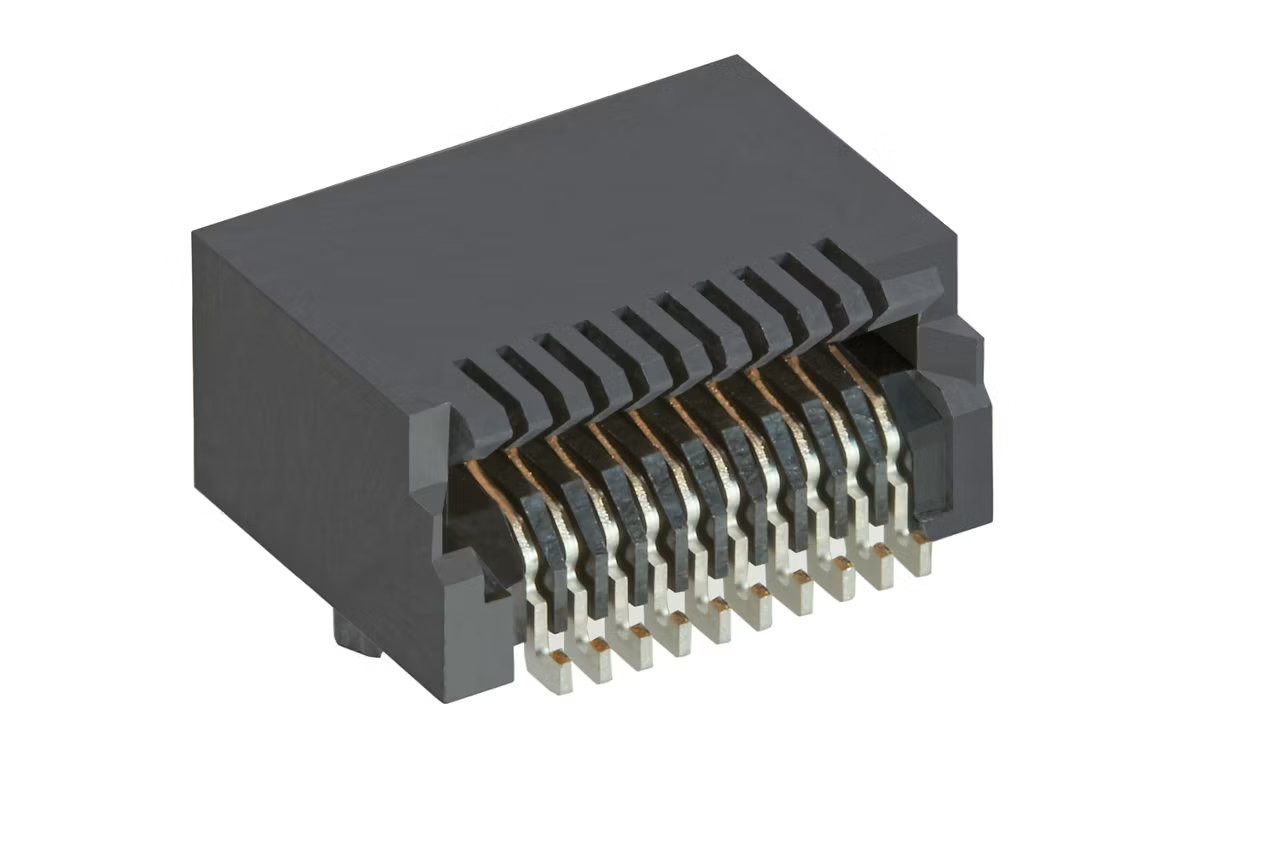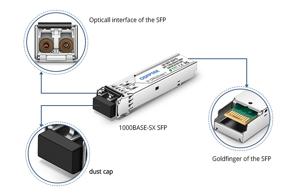Understanding Different Types of Small Form Factor Pluggable Connectors

Small form factor pluggable connectors play a crucial role in modern networking. These compact, hot-swappable devices connect network equipment like switches and routers, ensuring seamless data communication. You will find them essential for high-speed telecommunications, facilitating reliable connections through fiber optic or copper cables. Understanding the different types of these connectors is vital for optimizing network performance. Each type offers unique specifications and capabilities, allowing you to tailor your network setup to meet specific demands. By grasping their distinctions, you can enhance your network's efficiency and reliability.
What are Small Form Factor Pluggable Connectors?
Definition and Purpose
Small form factor pluggable connectors, often abbreviated as SFP, serve as essential components in modern networking. You will find these connectors in various devices, such as switches, routers, and network interface cards. They provide a compact and hot-swappable interface, allowing you to connect different types of fiber or copper cables. This versatility makes them indispensable in both telecommunications and data communications.
SFP connectors convert electrical signals into optical signals, facilitating high-speed data transmission over optical fibers. They support multiple communication standards, including Ethernet, Fibre Channel, and SONET/SDH. With speeds reaching up to 4.25 Gbps, SFP connectors ensure efficient and reliable data transfer. Their design allows for easy installation and replacement, minimizing downtime and enhancing network flexibility.
Importance in Networking
In the realm of networking, small form factor pluggable connectors play a pivotal role. You can optimize your network's performance by selecting the appropriate SFP module for your specific needs. These connectors enable seamless integration with existing network infrastructure, supporting a wide range of applications from data centers to enterprise networks.
The compact size of SFP connectors allows for high-density port configurations, maximizing the use of available space in network equipment. This feature proves particularly beneficial in environments where space is at a premium, such as data centers. By using SFP connectors, you can achieve high-speed connectivity without compromising on space or performance.
Moreover, the hot-swappable nature of SFP connectors means you can replace or upgrade modules without interrupting network operations. This capability ensures continuous network availability, which is crucial for maintaining business operations and meeting service level agreements.
Types of Small Form Factor Pluggable Connectors

Understanding the different types of small form factor pluggable connectors is crucial for optimizing your network's performance. Each type offers unique features and capabilities, allowing you to choose the best fit for your specific needs.
SFP
Specifications and Speed Capabilities
The SFP (Small Form Factor Pluggable) connector is a versatile component in networking. It supports data rates of up to 1 Gbps for Ethernet and 4 Gbps for Fibre Channel applications. You can use SFP connectors with both fiber optic and copper cables, making them adaptable to various network setups. Their compact design allows for high-density port configurations, which is ideal for environments where space is limited.
Common Applications
You will find SFP connectors commonly used in applications that require reliable and efficient data transmission. They are prevalent in enterprise networks, data centers, and telecommunications. Their ability to support multiple communication standards makes them a popular choice for network administrators looking to maintain flexibility and scalability.
SFP+
Enhanced Features
The SFP+ connector builds upon the foundation of the SFP, offering enhanced features for higher-speed applications. It supports data rates up to 10 Gbps, making it suitable for 10-gigabit Ethernet applications. SFP+ connectors are backward compatible with SFP ports, allowing you to upgrade your network infrastructure without replacing existing equipment.
Use Cases
SFP+ connectors are ideal for scenarios where high-speed data transmission is essential. You will often see them in data centers and high-performance computing environments. Their ability to handle increased bandwidth makes them a preferred choice for applications that demand fast and reliable connectivity.
SFP28
High-Speed Capabilities
The SFP28 connector represents the next step in small form factor pluggable technology. It is designed for 25 Gbps Ethernet applications, offering higher bandwidth capabilities compared to SFP+. This makes SFP28 an excellent choice for networks that require rapid data transfer and minimal latency.
Industry Applications
In industries where high-speed connectivity is critical, SFP28 connectors are invaluable. You will find them in sectors such as telecommunications, cloud computing, and financial services. Their ability to support demanding applications ensures that your network remains efficient and future-proof.
QSFP
Multi-Channel Support
The QSFP (Quad Small Form Factor Pluggable) connector stands out for its ability to support multiple channels. Unlike other connectors, QSFP can handle four data channels simultaneously. This feature allows you to achieve higher data rates and increased bandwidth. Each channel in a QSFP connector can transmit data at speeds of up to 10 Gbps, resulting in a total potential throughput of 40 Gbps. This multi-channel capability makes QSFP an excellent choice for applications that demand high-speed data transfer and efficient use of network resources.
You will find QSFP connectors particularly useful in environments where high-density port configurations are necessary. Their compact design allows you to maximize the number of connections in a limited space, which is crucial in data centers and large-scale networking setups. By utilizing QSFP connectors, you can enhance your network's performance and ensure that it meets the demands of modern data communication.
Typical Use Scenarios
QSFP connectors are ideal for a variety of high-performance networking applications. You will often see them in data centers, where they facilitate high-speed connections between servers, switches, and storage devices. Their ability to support multiple channels makes them suitable for applications that require rapid data transfer and minimal latency.
In addition to data centers, QSFP connectors are also prevalent in telecommunications. They enable efficient data transmission over long distances, making them essential for maintaining reliable communication networks. You can also find QSFP connectors in enterprise networks, where they support high-bandwidth applications such as video conferencing and cloud computing.
By choosing QSFP connectors, you can ensure that your network remains scalable and adaptable to future technological advancements. Their versatility and high-speed capabilities make them a valuable asset in any modern networking environment.
Compatibility Considerations
When selecting a small form factor pluggable connector, understanding compatibility is crucial. Different connectors offer varying features and capabilities, which can impact your network's performance and flexibility.
SFP vs. SFP+
Choosing between SFP and SFP+ connectors depends on your network's speed requirements. SFP connectors support data rates up to 1 Gbps, making them suitable for standard Ethernet applications. They are versatile and can work with both fiber optic and copper cables. In contrast, SFP+ connectors enhance this capability by supporting speeds up to 10 Gbps. This makes them ideal for high-speed applications like 10-gigabit Ethernet.
You should consider the backward compatibility of SFP+ connectors. They can fit into SFP ports, allowing you to upgrade your network without replacing existing infrastructure. This feature provides a cost-effective solution for enhancing network performance while maintaining compatibility with older equipment.
SFP vs. RJ45
The choice between SFP and RJ45 connectors often depends on the type of cabling in your network. SFP connectors are typically used with fiber optic cables, offering long-distance data transmission with minimal signal loss. They are essential in environments where high-speed and reliable connectivity is necessary, such as data centers and telecommunications.
On the other hand, RJ45 connectors are commonly used with copper cables. They are suitable for short-distance connections, such as within a building or campus. RJ45 connectors are prevalent in local area networks (LANs) due to their ease of use and cost-effectiveness.
When deciding between SFP and RJ45, consider the distance and speed requirements of your network. SFP connectors provide greater flexibility and scalability, while RJ45 connectors offer simplicity and affordability for shorter connections.
Selecting the Right Small Form Factor Pluggable Connector
Choosing the right small form factor pluggable connector is crucial for optimizing your network's performance. You need to consider several factors to ensure that you select the most suitable option for your specific needs.
Factors to Consider
Data Rate Requirements: Determine the speed your network demands. If you require speeds up to 1 Gbps, an SFP connector will suffice. For higher speeds, such as 10 Gbps, consider using an SFP+ connector. The SFP28 connector is ideal for even faster applications, supporting up to 25 Gbps.
Compatibility: Ensure that the connector you choose is compatible with your existing network equipment. SFP+ connectors offer backward compatibility with SFP ports, allowing you to upgrade without replacing all your infrastructure. This feature can save you time and money.
Cable Type: Decide whether you will use fiber optic or copper cables. SFP and SFP+ connectors work with both types, providing flexibility. However, if your network primarily uses copper cables, you might consider RJ45 connectors for short-distance connections.
Cost: Evaluate your budget. SFP+ connectors tend to be more expensive than SFP connectors due to their enhanced capabilities. Consider the long-term benefits of investing in higher-speed connectors against the initial cost.
Application Needs: Identify the specific applications your network supports. For high-density environments like data centers, QSFP connectors offer multi-channel support, maximizing bandwidth and space efficiency.
Comparison Chart of SFP Types
To help you make an informed decision, here is a comparison chart highlighting the key differences between various small form factor pluggable connectors:
Connector Type | Data Rate | Compatibility | Cable Type | Cost |
|---|---|---|---|---|
SFP | Up to 1 Gbps | Compatible with SFP ports | Fiber Optic & Copper | Lower |
SFP+ | Up to 10 Gbps | Backward compatible with SFP ports | Fiber Optic & Copper | Higher |
SFP28 | Up to 25 Gbps | Compatible with SFP28 ports | Fiber Optic | Higher |
QSFP | Up to 40 Gbps (4x10 Gbps channels) | Compatible with QSFP ports | Fiber Optic | Higher |
By considering these factors and using the comparison chart, you can select the right small form factor pluggable connector that meets your network's requirements. This choice will enhance your network's efficiency and ensure reliable data communication.
Applications of Small Form Factor Pluggable Connectors in Networking

Small form factor pluggable connectors are essential in various networking environments. They provide flexibility, speed, and reliability, making them a vital component in modern networks. Understanding their applications helps you build and maintain a robust and scalable network.
Data Centers
In data centers, you rely on small form factor pluggable connectors to manage high-density connections. These connectors allow you to maximize space while ensuring efficient data transmission. You can easily swap out modules to upgrade or maintain your network without disrupting operations. This hot-swappable feature is crucial in data centers where uptime is critical. By using these connectors, you ensure that your data center operates smoothly and efficiently.
Telecommunications
Telecommunications networks benefit greatly from small form factor pluggable connectors. You use them to facilitate long-distance data transmission with minimal signal loss. These connectors support various communication standards, making them versatile for different telecom applications. In telecommunications, maintaining reliable and fast connections is essential. By integrating these connectors, you enhance the performance and reliability of your communication networks.
Enterprise Networks
In enterprise networks, small form factor pluggable connectors offer scalability and flexibility. You can adapt your network to meet changing demands by selecting the appropriate connector type. These connectors support a range of applications, from video conferencing to cloud computing. By using them, you ensure that your enterprise network remains efficient and capable of handling high-bandwidth tasks. This adaptability is key to maintaining a competitive edge in today's fast-paced business environment.
Future Trends in Small Form Factor Pluggable Technology
Emerging Technologies
You will notice that small form factor pluggable connectors continue to evolve with emerging technologies. One significant advancement is the integration of Coarse Wavelength Division Multiplexing (CWDM) and Dense Wavelength Division Multiplexing (DWDM) technologies. These innovations enhance bandwidth efficiency, allowing you to transmit multiple data streams over a single fiber optic cable. This capability is crucial for meeting the growing demand for high-speed data transmission in modern networks.
Another exciting development is the introduction of QSFP-DD (Quad Small Form Factor Pluggable Double Density) and OSFP (Octal Small Form Factor Pluggable) connectors. These new types support higher data rates and increased density, making them ideal for next-generation data centers and telecommunications networks. By adopting these technologies, you can future-proof your network infrastructure and ensure it remains competitive in an ever-evolving digital landscape.
Market Predictions
The market for small form factor pluggable connectors is poised for significant growth. As more industries embrace digital transformation, the demand for reliable and high-speed connectivity will continue to rise. You can expect to see increased adoption of advanced SFP modules in sectors such as cloud computing, telecommunications, and financial services.
Experts predict that the market will also witness a shift towards more energy-efficient and environmentally friendly solutions. Manufacturers are likely to focus on developing connectors that consume less power while maintaining high performance. This trend aligns with the global push towards sustainability and reducing carbon footprints.
In summary, staying informed about these emerging technologies and market predictions will help you make strategic decisions for your network. By leveraging the latest advancements in small form factor pluggable technology, you can enhance your network's performance and ensure it meets the demands of the future.
You have explored the various types of small form factor pluggable connectors and their significance in networking. Each type offers unique features that cater to different network requirements. When selecting an SFP module, consider your specific networking needs to ensure optimal performance. By understanding these connectors, you can enhance your network's efficiency and reliability. For further inquiries or purchases, feel free to reach out. Your network's success depends on informed decisions, and choosing the right connector is a crucial step.
See Also
In-Depth Guide to Various Cable and Connector Types
Exploring Various Types of RF Connectors Available
Discovering ZH23 Series Connectors for Superior Performance
